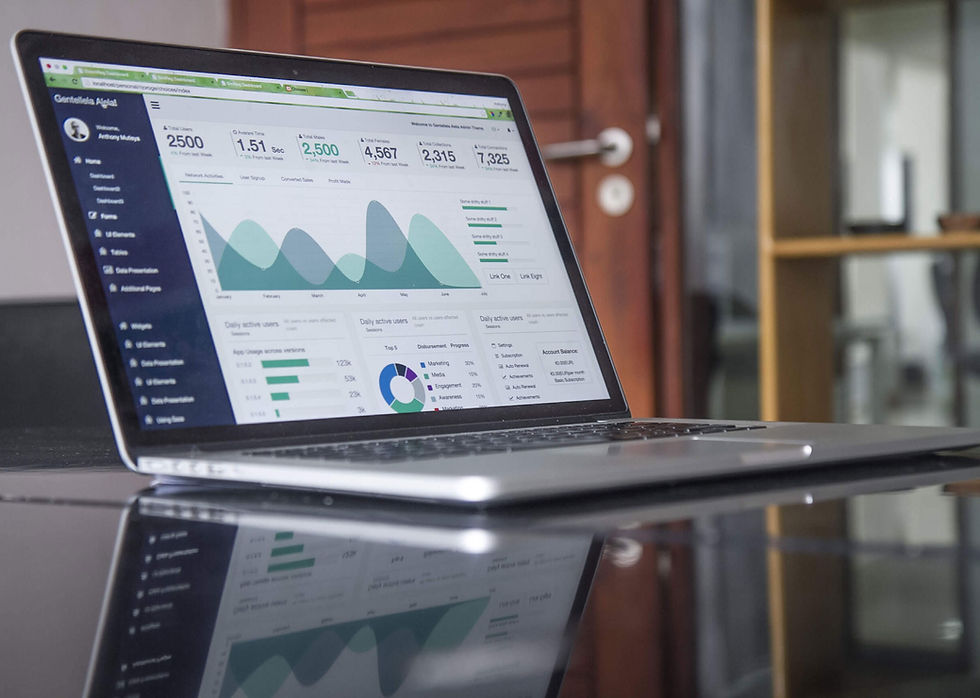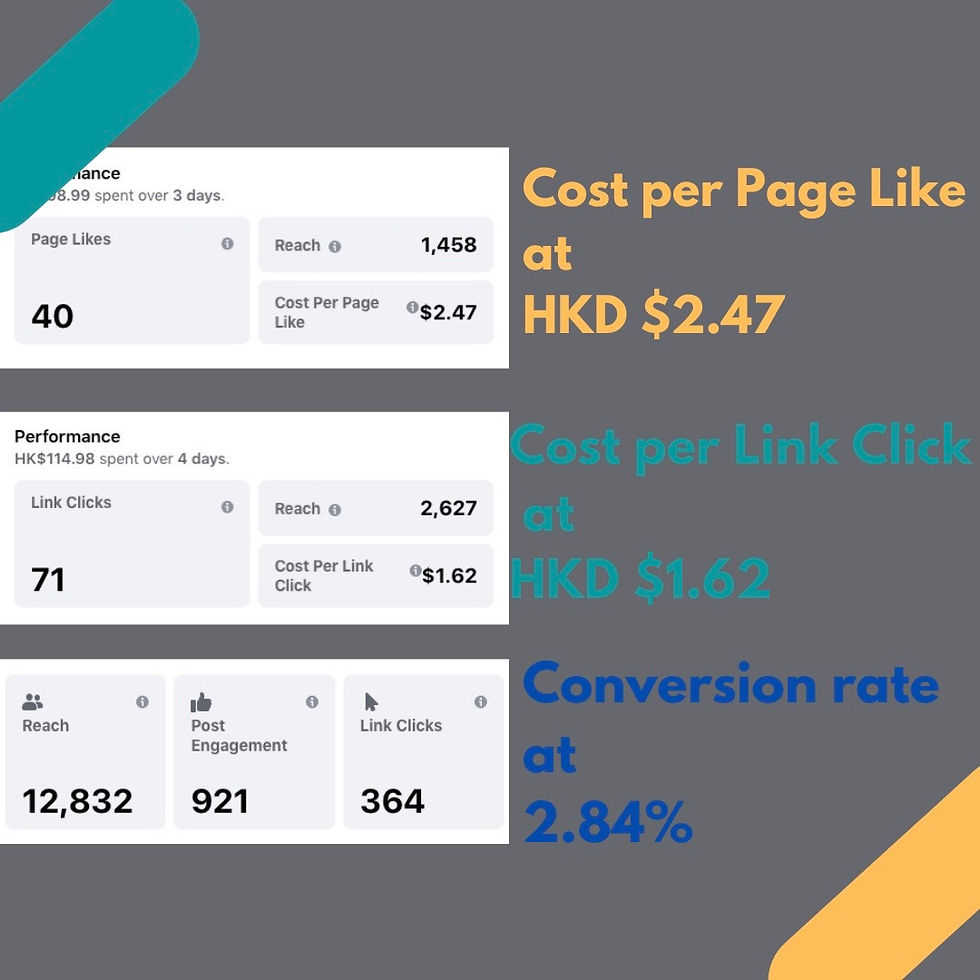How to make a successful ad without any ad buying experience at all
- Joyce Tsang
- Mar 11, 2021
- 6 min read
Updated: Sep 2

Ads aren’t a magic bullet—but when done right, they’re one of the most powerful tools to grow your brand.
A well-crafted ad can attract high-quality leads and drive impressive conversion rates.
But before you even start designing one, you need to define how you’ll measure success. Your metrics—whether it’s click-through rate, cost per acquisition, or return on ad spend—will shape everything from strategy to execution.
What are social media ads?
Social media ads are paid advertisements that appear on social media platforms, such as Facebook, Instagram, Twitter, and LinkedIn. These ads are designed to reach potential customers and promote your brand through targeted messaging and creative visuals.
Fast fact
According to a study by Social Media Today, Facebook and Instagram are the most popular social media platforms for advertising, with 93% of social media advertisers using these platforms.
Key takeaway
Successful social media ads require careful planning and execution, including targeting the right audience, setting a realistic budget, and creating compelling visuals and messaging.
The biggest mistake most people make focus on just the large numbers of reach and derive no key learnings for improving future ads. Each ad is a learning process that helps the brand recognize what ads work for them and what doesn’t. The worst-case scenario is to not know what numbers each ad should be achieving, and therefore, failing to recognize the key indicators for building a successful ad.
At the end of the day, any brand should aim to create effective ads consistently instead of just having one-hit wonders and waste their marketing budget away.
i) What is your ad’s objective?
“Getting more sales” is not an objective. It is an outcome that, honestly, cannot be solely activated by an ad. Even if people click does into your ad, there will not be more sales if your e-commerce website is a mess or if your pricing strategy is inappropriate for your target audience. However, that does not mean the ad not successful. Do be reminded that the ad is just a part of the puzzle that can help accelerate the selling process, but by no means can it fix core problems such as user experience and product propositions.
Instead, objectives should be based on which stage the ad belongs in. Is it an awareness stage ad, interest stage ad, or a consideration stage ad? An awareness stage ad is to reach more people and to build brand awareness. This, therefore, leads to metrics and measurements such as reach and views. On the other hand, an interest stage ad is to engage more people and make people interested in your brand. This, therefore, leads to metrics and measurements such as engagement rate and followers.
Even if it is a consideration stage ad, which means you are trying to get people to purchase from you, the metrics are much more than just actual customers. Consider metrics such as conversations started on messenger, appointments booked, membership sign-ups, time spent on certain landing pages, and more. You can create a retargeting strategy that has more potential in triggering purchases through promotional triggers and limited-time offers by focusing on these numbers.
ii) What is your targeting?
Now that you have recognized the objective of the ad, who are you sending these ads? Even if you’re a freshly new start-up, you should never be targeting the general mass. You should recognize certain traits of your target audiences and organize those into pools for you to test your ads. If your targeting is just based on demographic information, chances are, you’ll be ending up with large numbers of impressions, but the percentage of that becoming your reach is minute. Even if you managed to score a good number of reach, you would not know what content to create for the interest stage ad because you don’t know who you are talking to (other than these people being from a certain age group, gender, or country). Worst yet, if your targeting is unclear in the interest stage, you will find a low return on investment because your content is not focused on solving these people’s problems, which is what drives people to pay attention to you at all.
The results from targeting your ad towards a general pool of people include low frequency because the pool is huge. This leads to low recall, meaning very few people even remember seeing your ad. The percentage of people traveling down your funnel, from awareness to consideration, is likely to be tiny. This means all the ad money spent on the top funnel is not trickling down to the bottom, and the best you can do is covert low-hanging fruits. Those who do end up buying from you already had the intention to buy a similar product before they found you, so buying from you is just a matter of luck and has very little to do with your marketing efforts. Why does this matter? Because it means you’re wasting your marketing budget.
iii) What is your budget?
I don’t believe big budgets determine the success of an ad. I, however, believe by identifying benchmarks and stage-to-stage percentages helps determine a suitable budget and lead to the birth of a successful ad. This means you need to test and learn. Put in an affordable budget after fulfilling points 1 and 2 above, and grade your ads using global benchmarks. Now, think about how you can reduce your cost per action. Will a change in targeting or content affect the results? Did a creative or the lack of a button cause the CPA to be high? Refine your ad and try again. See if your cost per action is now cheaper. This sounds like throwing a lot of money down the drain, but that is exactly why I mentioned in the very beginning that you must treat each ad as a learning process, or else you’re gaining nothing from your spending.

Since I have years of experience, I can consistently achieve benchmarks. As a reference, I can achieve a cost per action around HKD 1 for any action in the awareness and interest stage. What I aim to do after is to achieve a 3% of traffic flowing down from top to bottom-funnel. This means three out of every a hundred people reached trickle down to the consideration stage. If I can achieve that, that means I know how much my cost per lead is. By back-engineering this number, I can advise my client on how much budget they need to achieve their consideration and conversion goals. It can be done, but it is not easy.
iv) How long is the duration of running your ad to see it become successful?
An ad for me doesn’t start from the day I create the ad. The ad begins when the content strategy is created, and the content pillars are tested through organic. My organic content is the key to unlocking my successful ads. They are free learning blocks that indicate what my target audiences enjoy. Do they like videos or static? When are they the most active? Which posts reach the most people? With this information, I’m never starting blind.
Clients have asked me why their competitors seem to be running on the same ad all the time. The answer may be as simple as because they are lazy or more sophisticated because their ad works and their target audience is churning themselves for their ads. If you have identified the golden content for your target audience (meaning you know exactly what visual, what format, and what hooks trigger your target audience’s attention), it is not impossible to run the same ad for six months and still see performance. The key here is to have your targeting be able to renew itself. This can only happen if you have done part 2 correctly. If you have targeted a specific pool in the awareness stage, they should trigger down into your interest group, and so on. This means your consideration ad is constantly fed to new potential leads and that they have not seen this ad before. There is so much traffic out there, so traffic is never a problem. The problem is if you know how to capture them into your funnel, so they keep your ads alive.

The art of creating a good ad is not easy, and this article is quite dense for that particular reason. However, if you wish to learn more and understand the concepts behind a content strategy, targeting, organic, and paid distribution, you should check out my Inbound Marketing Crash Course. Everything from creating content to a paid strategy is covered in the step-by-step lessons, so you’re really losing out if you’re not reading the lessons now.




Comments